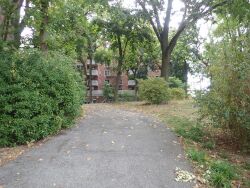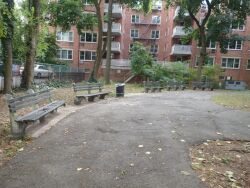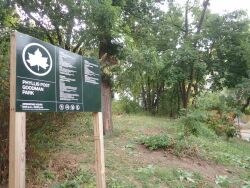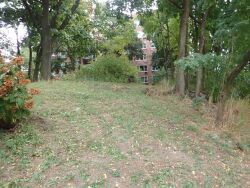Phyllis Post Goodman Park
Phyllis Post Goodman Park
Riverdale community leader Phyllis Post Goodman (1932-1995) received her Bachelor's and Master's Degrees from the City University of New York and spent her entire career working as a school teacher in Washington Heights. Goodman was known for her unwavering commitment to education—she served as vice president of both the David A. Stein Riverdale Junior High School and Bronx High School of Science Parents' Associations, and was President of P.S. 24 Parents' Association during the teacher's strike of 1968. In the early 1970s, Goodman was active in the effort to preserve a piece of land on West 230th Street originally slated for commercial development. These efforts proved successful, and today the land is the site of John F. Kennedy High School and P.S. 37.
Goodman’s involvement in community affairs led to her appointment to Bronx Community Planning Board 8, where for 25 years, she served on various committees, including Parks, Traffic and Safety, Education and Library, and Cultural Affairs. Goodman also volunteered at the Lehman College Art Gallery and the Lighthouse Center for the Blind, was a member of the Bronx Committee on the Arts, and active with the Bronx Court Monitors. Goodman remained remarkably active in spite of her 40-year battle with cancer, which lead to her involvement with Gilda's Club and SHARE, two educational-advocacy and support groups for women with cancer and their family and friends. This park was named in Goodman's honor by Local Law No. 39 on May 14, 1996.
Bounded by the Henry Hudson Parkway and Kappock Street, this site was acquired on July 20, 1935, and assigned to Parks on August 18, 1938, in connection with the widening of the Henry Hudson Parkway between Kappock and West 239th Streets. The parkway is named after explorer Henry Hudson (1575-1611), who was hired by the Dutch East India Company to find the fabled “Northwest Passage” believed to lead through North America to the Far East. On September 2, 1609, Hudson’s ship, the Halve Maen (Half Moon) dropped anchor in the lower bay of what is now the New York Harbor. Hudson’s last voyage was in 1611, when, after discovering what is now known as Hudson’s Bay and claiming it for England, his crew mutinied and cast him adrift.
Today, Phyllis Post Goodman Park is known for its lush vegetation. Black locusts, Norway maples, and Northern Red Oaks cast their shade over a small sitting area and wildflower garden in the center of the park. The garden boasts day and asiatic lily, winged euonymous, houtinyea, hosta, roses, azalia, and balloonflower. A small stone birdbath enhances the bucolic atmosphere by attracting bluejays, robins, and even the occasional mockingbird.
Check out your park's Vital Signs
Clean & Safe
Green & Resilient
Empowered & Engaged Users
Share your feedback or learn more about how this park is part of a
Vital Park System




